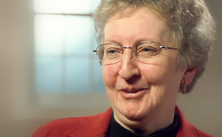PatternCNV
Citation:
C. Wang #, J. Evans #, A. Bhagwate, N. Prodduturi, V. Sarangi, M. Middha, H. Sicotte, P. Vedell, S. Hart, G. Oliver, J. Kocher, M. Maurer, A. Novak, S. Slager, J. Cerhan, and Y. Asmann. “PatternCNV: a versatile tool for detecting copy number changes from exome sequencing data.” Bioinformatics, 2014. (link). #: co-first authors.
Originally designed for detecting exonic mutations, Exome-seq data have also been utilized in detecting DNA copy number variants (CNVs). Despite the existence of several CNV detection tools, there is still a great need for a sensitive and accurate CNV calling algorithm with built in QA/QC steps that is CPU and memory efficient and doesn’t require a paired reference for each sample.
We developed a novel method named patternCNV, which: (1) accounts for the read coverage variations between exons within a sample while leveraging the consistencies of this variability across different samples; (2) calculates the exon level call confidences by separately interrogating the CNV values of consecutive bins within an exon (3) reduces the BAM files to WIG formats and therefore greatly accelerates the computation; (4) incorporates multiple QC measures designed to identify outlier samples and batch effects; and (5) provides a variety of visualization options including chromosome- and gene-level views of CNVs, along with a tabular summarization of the exon-level CNVs. Compared with other CNV calling algorithms in a lymphoma exome-seq study, patternCNV is much faster and displays higher resolution and improved sensitivity/specificity allowing for the detection of subtle CNV events.
- Source Code (PatternCNV_1.0.tar.gz, 20KB)
- User Manual (PatternCNV_User_Manual_1.0.doc, 440KB)
- Simulated Data (simulated_data.tar.gz, 89MB)
Contacts:
Chen Wang, Ph.D.
Jared Evans
Page last modified: November 17, 2023










